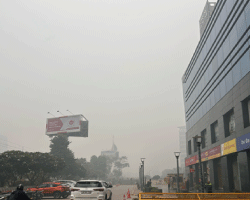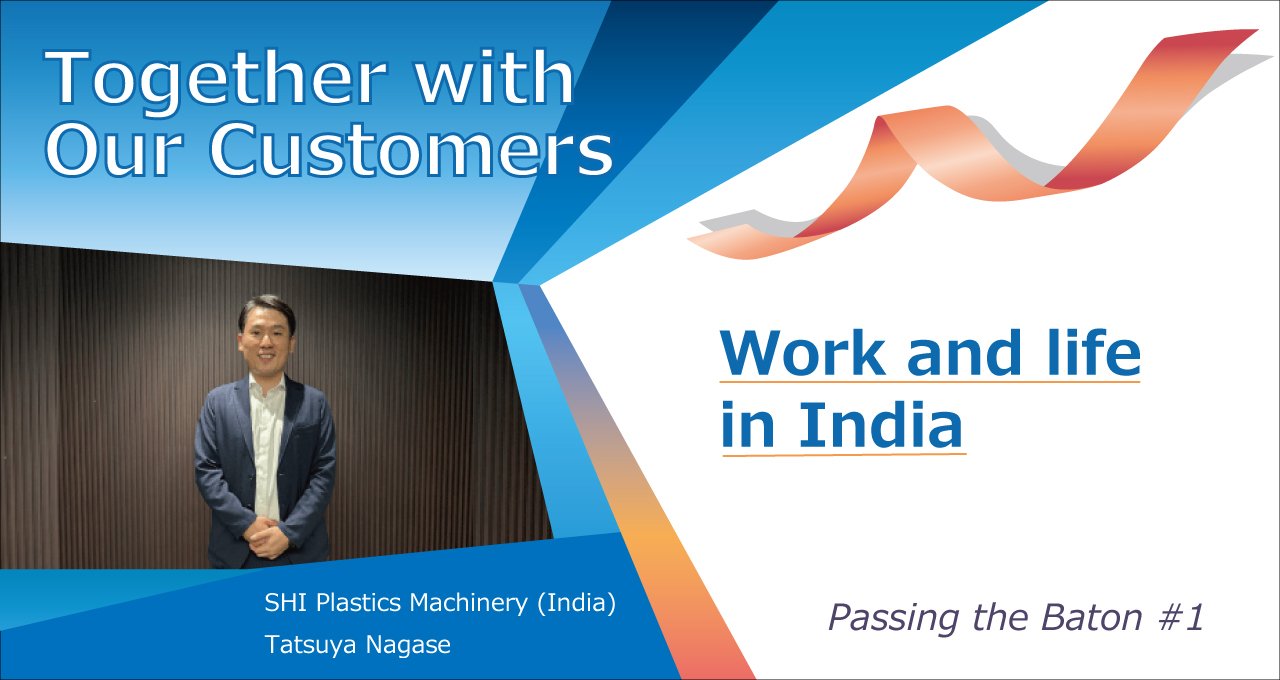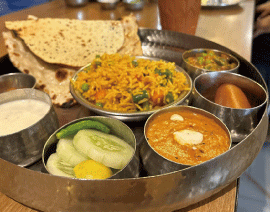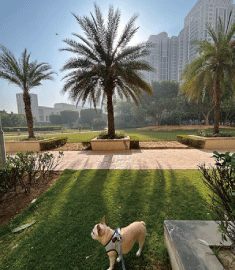We are pleased to present the first article in the series "Together with Our Customers". This series of articles will be written by our employees and be presented in a relay format.
Each featured employee will choose the next employee as a writer of the following article. The first article is written by Tatsuya Nagase, director of SHI Plastic Machinery India.
Profile
- Name: Tatsuya Nagase
- Department: SHI Plastics Machinery (India) Private Ltd.
- Position: Director
- Joined: 2015
*Details are current as of April 2025.
Job Description
Our company has offices in India located in the northern Delhi metropolitan area, southern Chennai, and western Ahmedabad. I work in Gurgaon, which is part of the northern Delhi metropolitan area. My role primarily focuses on expanding the sales of Sumitomo's plastic injection molding machines in India and managing after-sales service activities. India is a rapidly growing market with significant investments. Despite facing various challenges in both business and daily life, I am constantly striving to overcome them through regular attempts and adjustments.
Local Living Environment

[Climate]
Although many people might assume that India is hot all year round, the northern Delhi metropolitan area has distinct seasons: summer, winter, and short periods of spring and autumn. From April to June, it is summer, with extreme temperatures reaching close to 50 degrees Celsius. Because of the dry climate, it might be somewhat easier to endure the heat compared to Japan's rainy season. From July to September, temperatures settle in the 30s, but the high humidity makes it feel like summer in Japan. October is a brief autumn, making it a relatively comfortable season. From November to February, it is winter, and temperatures can drop to around 5 degrees Celsius in the mornings and evenings.
During this period, farmers in northern India conduct large-scale field burning, which results in severe air pollution. Masks are essential, children cannot play outside, and sometimes even indoor spaces become smoky. After the air pollution season ends, March brings a brief spring with very pleasant weather, but temperatures gradually rise again, leading to another period of extreme heat.
[Food]
There are about 10,000 Japanese living in India, with approximately 6,000 person residing in the northern region. Consequently, there are more than 10 Japanese restaurants in this area. The number and quality of these restaurants are improving year by year. Although prices are relatively high, dining out is becoming more convenient. On the other hand, Indian cuisine is heavily influenced by Hinduism, with about 70% of the population being vegetarian. This makes it difficult for foreign food chains to enter the market. Beef, considered sacred in Hinduism, cannot be consumed in most states.
That's why enjoying beef or sushi when I return to Japan feels particularly special.
Local Business Environment
India's economic growth has led to an improvement in the quality of life (QOL), stimulating and driving demand in various industries. For example, new car sales in the automotive industry have increased by 5-7% annually, making India the third-largest market in the world after China and the United States, surpassing Germany and Japan in recent years. Market leader Maruti Suzuki has announced plans to expand its production capacity to 4 million units, approximately double the current capacity, over the next few years. Additionally, the IT industry, including the manufacturing of smartphones and computers, is seeing planned production shifts to India, predicting an acceleration of this trend in the future.
Trends in the Indian Injection Molding Machine Market
Given the current economic environment, we believe that the Indian plastic injection molding machine market will also expand rapidly in the future. Although hydraulic injection molding machines are still the mainstream, India is rapidly growing and becoming a global manufacturing and export hub. I think that the shift towards electric injection molding machines will progress further as productivity and quality requirements continue to increase. We receive numerous inquiries from Indian customers, and discussions about recent investment plans and factory expansions are ongoing. We are continuously enhancing our sales efforts to ensure that more customers in India can adopt Sumitomo machines and experience their benefits.
Private Life
On weekends, I spend time playing golf or tennis with customers or local residents, shopping, or walking my dog with my family. During long holidays, I take advantage of my location to travel abroad. I have visited Oman, Uzbekistan, the Maldives, and Egypt over the past two years. Traveling to countries that are difficult to reach from Japan is one of the pleasures of living in India.
Baton passed to
The next writer will be Yasuyuki Kaminaga. He is working at SHI Plastics Machinery de Mexico. He and I joined the company as mid-career hires at the same time and were posted overseas during the same period. I am sure he will introduce interesting insights about Mexico's business and living environment.



